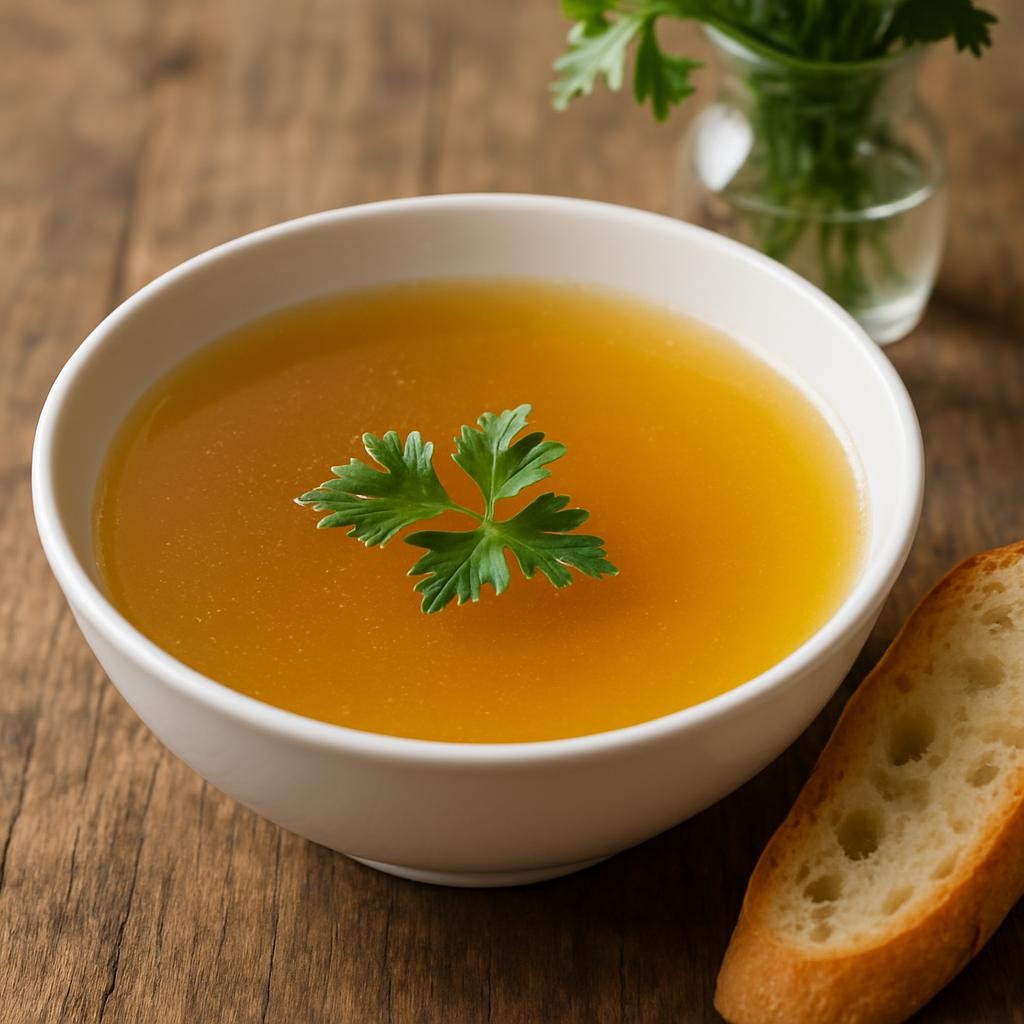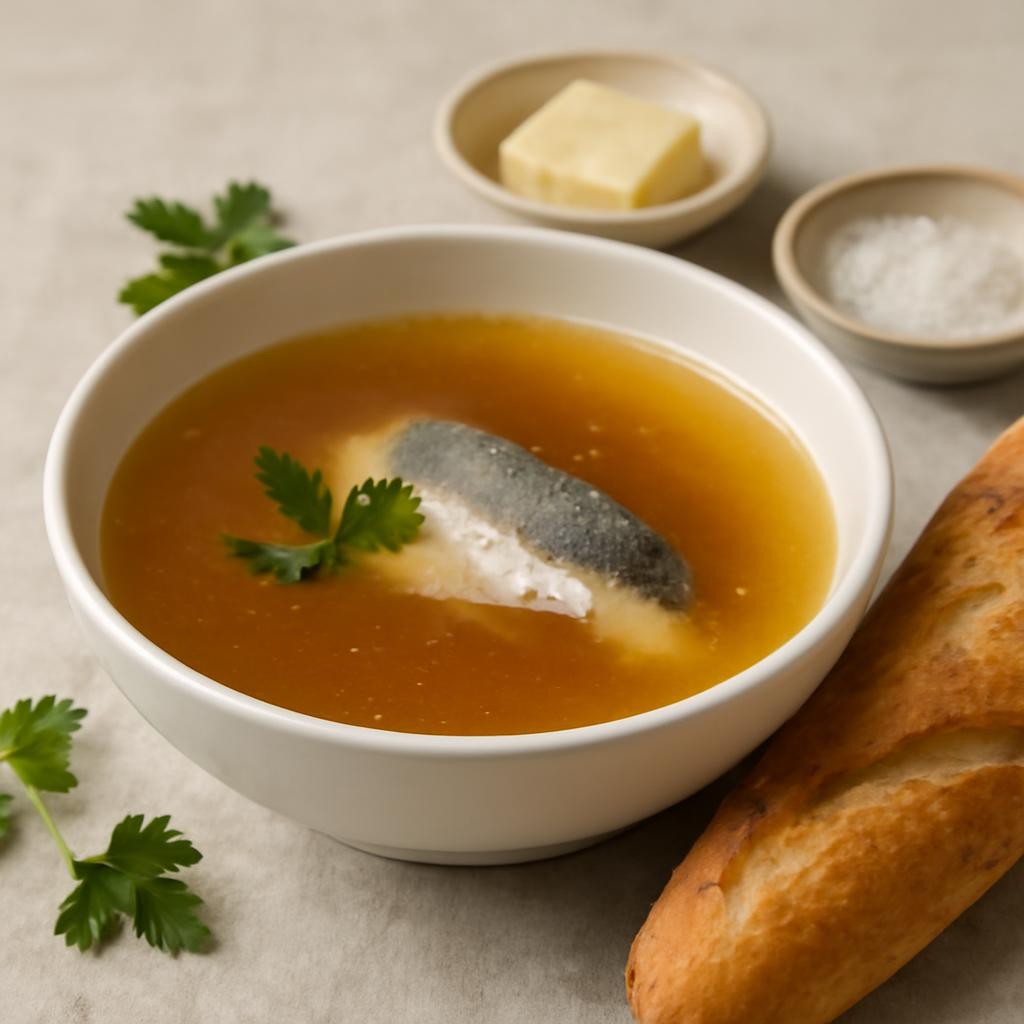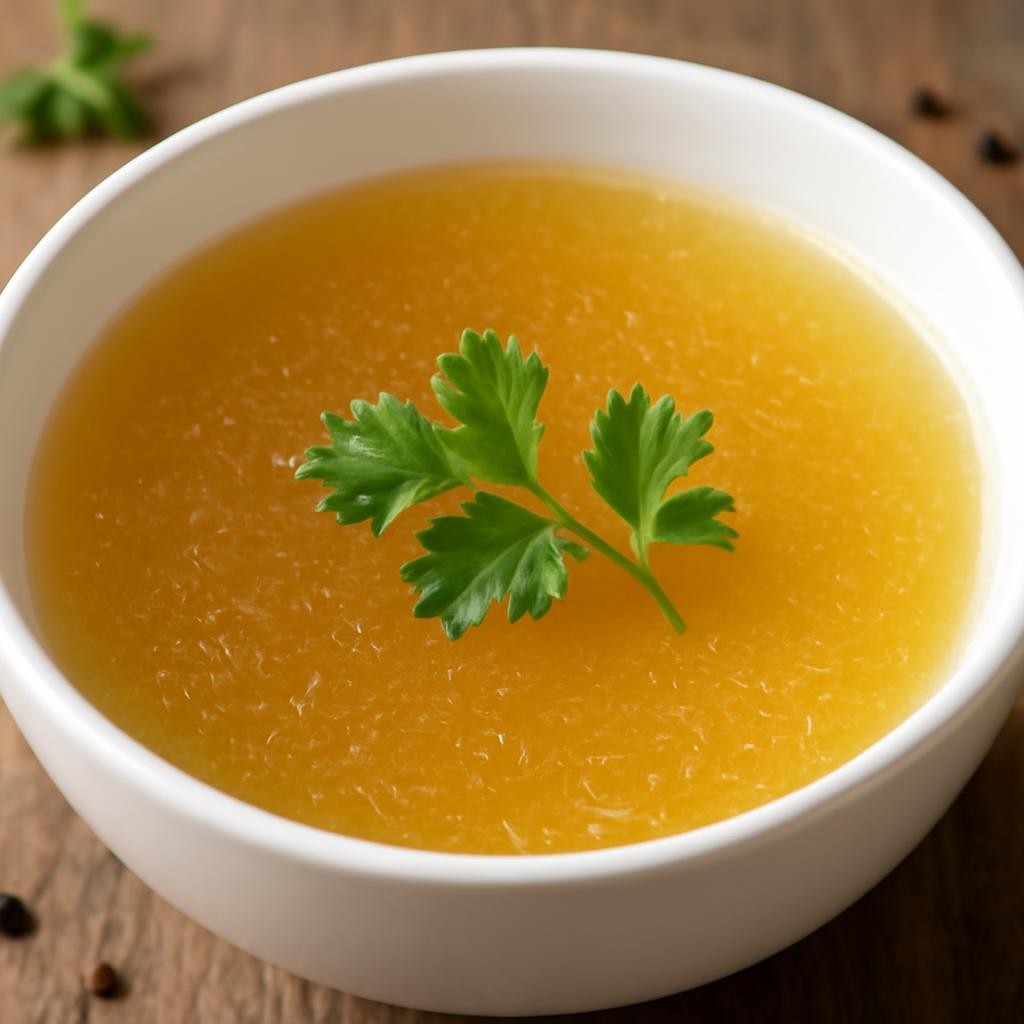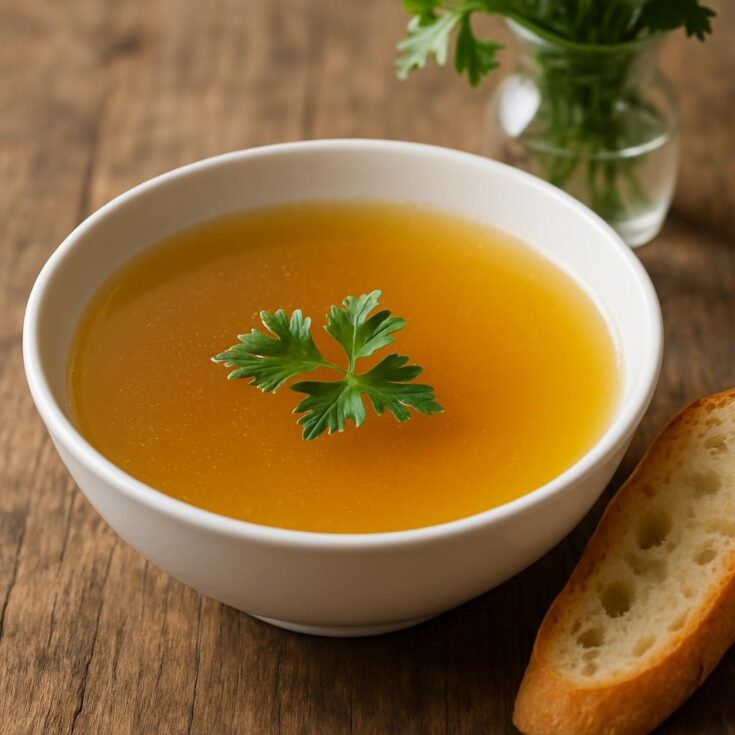Fish Stock is a culinary treasure that adds depth and flavor to a myriad of dishes. This simple yet exquisite recipe captures the essence of the ocean, providing a rich base for soups, stews, and sauces. With its delicate balance of flavors and the aroma of fresh herbs, this fish stock not only enhances the taste of your seafood dishes but also elevates your cooking to a whole new level. It’s a staple that every home cook should master, especially if you’re passionate about seafood.

Why You Will Love This Recipe
You will absolutely adore this fish stock recipe for several reasons. Firstly, the flavor profile is incredibly versatile; it brings a subtle brininess and complexity that can transform a simple dish into a gourmet experience. Secondly, the recipe is straightforward and doesn’t require any fancy techniques or hard-to-find ingredients, making it accessible for cooks of all skill levels. It fits perfectly into a healthy diet, as it’s low in calories and can be made with fresh, wholesome ingredients. Moreover, making your own stock allows you to control the salt levels and avoid the preservatives often found in store-bought versions.
Tips and Tricks
To make your fish stock even better, here are some tips and tricks:
- Use high-quality fish bones and trimmings; they are essential for a rich flavor.
- Roast the bones and vegetables in the oven for about 30 minutes before simmering to deepen the flavor.
- Add a splash of white wine while the stock is simmering for an additional layer of acidity that brightens the flavor.
- Don’t skip the fresh herbs; they contribute significantly to the aromatic quality of the stock.
- Simmer gently; a rolling boil can make the stock cloudy, while a gentle simmer keeps it clear and clean-tasting.
Make Ahead Tips
Fish stock is perfect for meal prep! You can make a large batch and store it for later use. After cooking, let the stock cool completely before transferring it to airtight containers. It will keep in the refrigerator for up to 3 days or can be frozen for up to 3 months. Consider portioning it into ice cube trays for easy use—just pop out a cube whenever a recipe calls for stock.

Recipe Variations
Feel free to get creative with your fish stock! Here are some variations to consider:
- For a more robust flavor, add shrimp shells along with the fish bones.
- Experiment with different herbs such as dill or tarragon for unique flavor profiles.
- If you prefer a spicier stock, add a couple of crushed red pepper flakes or a sliced chili pepper.
- For a more Asian-inspired stock, include ginger, lemongrass, and soy sauce.
How to Serve
The finished fish stock can be enjoyed in various ways. Use it as a base for creamy bisques, risottos, or seafood chowders. For presentation, serve it in deep bowls garnished with fresh herbs, a drizzle of olive oil, or a squeeze of lemon. Pair it with crusty bread for a comforting meal or spoon it over poached fish for a light yet flavorful dish.

Pairing Suggestions
Enhance your dining experience with suitable pairings. A crisp, dry white wine like Sauvignon Blanc or a light-bodied Pinot Grigio complements the delicate flavors of fish stock beautifully. For non-alcoholic options, a sparkling water with a wedge of lemon can refresh the palate. As for side dishes, consider a simple arugula salad or roasted seasonal vegetables, which harmonize well without overshadowing the stock’s subtlety.
How to Store
To store your fish stock properly, allow it to cool before transferring it to airtight containers. In the refrigerator, it can last for up to 3 days. For longer storage, pour the stock into freezer-safe containers or bags, leaving some space at the top for expansion. When you’re ready to use it, thaw it overnight in the refrigerator or gently reheat it on the stove, ensuring it doesn’t boil.
Equipment Needed
You will need a few essential kitchen tools for this recipe:
- A large stockpot for simmering the ingredients.
- A fine mesh strainer or cheesecloth for straining the stock.
- A wooden spoon for stirring.
- Optional: an oven-safe baking dish if you choose to roast the bones and vegetables.

Dietary Adaptations
This fish stock recipe is inherently gluten-free, dairy-free, and nut-free. However, if you’re looking to make it vegan, consider using a vegetable stock recipe as a base instead, or incorporate seaweed for an umami flavor. Always ensure that any substitutions align with your dietary needs.
Seasonal Adaptations
To make the most of seasonal ingredients, adjust what you put in your fish stock. In the spring, consider adding fresh asparagus or spring onions for a lighter touch. In the fall, include root vegetables like carrots and parsnips, which add a heartiness to the stock. Utilizing seasonal produce not only elevates the flavor but also adds nutritional value.
Recipe FAQs
Q: Can I use frozen fish bones for the stock?
A: Yes, frozen fish bones work well. Just ensure they are fully thawed before using.
Q: What if I don’t have white wine?
A: You can omit the wine altogether or substitute it with a splash of lemon juice for acidity.
Q: How long can I simmer the stock?
A: Ideally, the stock should simmer for 30-45 minutes. Longer than that can make it bitter.
Q: Can I use whole fish instead of just bones?
A: Absolutely! Using whole fish, especially heads and tails, can enhance the flavor of your stock.
How To Make fish stock recipe
Fish Stock

Fish Stock is a culinary treasure that adds depth and flavor to a myriad of dishes.
Ingredients
- 2 pounds of fish bones and trimmings (such as sole, flounder, or snapper)
- 1 onion, quartered
- 1 carrot, chopped
- 1 celery stalk, chopped
- 2 cloves of garlic, smashed
- 1 bay leaf
- 5-6 sprigs of fresh parsley
- 1 teaspoon of black peppercorns
- 8 cups of cold water
- Optional: ½ cup of white wine
Instructions
- Preheat your oven to 400°F (200°C).
- Spread the fish bones and trimmings on a baking sheet and roast for about 30 minutes until lightly browned.
- In a large stockpot, add the roasted fish bones, onion, carrot, celery, garlic, bay leaf, parsley, and peppercorns.
- Pour in the cold water and white wine (if using).
- Bring the mixture to a gentle simmer over medium-high heat, then reduce to low heat.
- Skim off any foam that rises to the top for a clearer stock.
- Let the stock simmer for 30-45 minutes, stirring occasionally.
- Remove from heat and strain the stock through a fine mesh sieve or cheesecloth, discarding the solids.
- Let the stock cool completely before storing in airtight containers.
Nutrition Information
Yield
8Serving Size
1Amount Per Serving Calories 169Total Fat 3gSaturated Fat 1gTrans Fat 0gUnsaturated Fat 2gCholesterol 65mgSodium 85mgCarbohydrates 3gFiber 1gSugar 1gProtein 30g
Easy Shrimp Recipes.com, occasionally offers nutritional information for recipes contained on this site. This information is provided as a courtesy and is an estimate only. This information comes from online calculators. Although allchickenrecipes.com attempts to provide accurate nutritional information, these figures are only estimates.
Final Thoughts
Making your own fish stock is a rewarding endeavor that not only enhances your dishes but also provides a sense of accomplishment in the kitchen. With this easy recipe, you can create a flavorful base that will elevate your culinary creations. So next time you’re preparing a seafood dish, don’t forget to whip up a batch of this delightful fish stock. Enjoy the process, and savor the delicious results!

